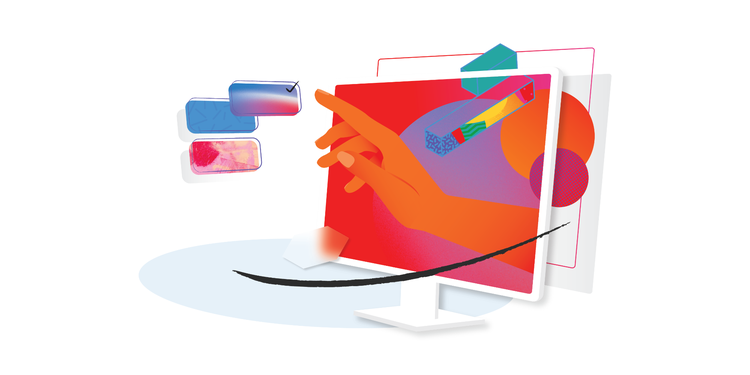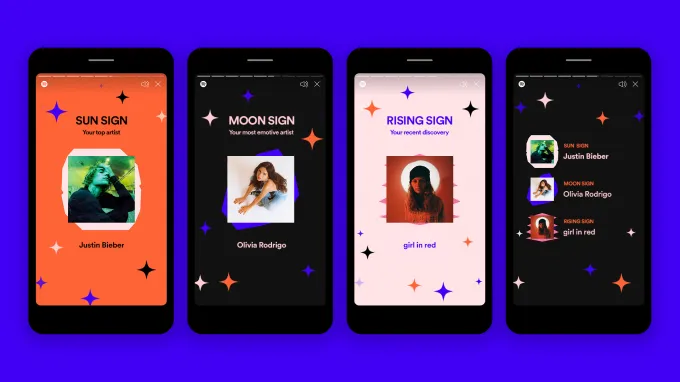
Unlocking Customer Potential: The Power of AI Marketing in Lead Scoring
August 24, 2023
Revolutionizing Social Media Analytics: Unleashing the Power of AI Marketing
August 25, 2023In today’s fast-paced digital era, where the success of marketing strategies hinges on deep insights into consumer behavior, the fusion of Artificial Intelligence (AI) and Behavioral Analytics emerges as a game-changer. The once nebulous marketing realm has transformed into a dynamic landscape where precision, personalization, and predictability reign supreme.
The Evolving Landscape of AI in Marketing
Gone are the days when instincts largely drove marketing campaigns. With the advent of AI, businesses have unlocked the potential to analyze vast datasets in real time, enabling them to tailor their strategies with surgical precision. This synergy between data-driven decision-making and marketing prowess has given rise to a new era of marketing—AI marketing.
The Intricacies of Behavioral Analytics
At the heart of AI marketing lies the enigmatic realm of behavioral analytics. This refers to the meticulous tracking and analysis of user interactions with digital platforms. Every click, every hover, and every scroll is scrutinized to extract valuable insights into consumer preferences, motivations, and needs. But what exactly does behavioral analytics entail, and how does it empower AI marketing strategies?
Understanding Behavioral Analytics
Defining Behavioral Analytics
Behavioral analytics is the scientific art of deciphering user intent through digital footprints. It involves unraveling user behavior patterns, understanding the decision-making process, and predicting future actions. In simpler terms, it’s akin to understanding the hidden language of clicks and scrolls.
The Data Goldmine: Collecting User Behavior
Imagine a virtual treasure trove brimming with invaluable nuggets of data. This trove comprises user behavior—the pages they visit, the time spent on each page, the products they explore, and the items they add to their carts but never purchase. This data, often collected through cookies and tracking pixels, forms the bedrock of behavioral analytics.
Tools and Technologies in Behavioral Analytics
The arsenal of tools and technologies that aid in behavioral analytics is nothing short of impressive. From the omnipresent Google Analytics to more advanced customer journey tracking platforms like Mixpanel and Kissmetrics, these tools meticulously piece together the puzzle of user behavior. AI-driven agencies take it up by deciphering complex patterns a human eye might overlook.
The Link between Behavioral Analytics and AI
Now, let’s sprinkle a touch of AI magic into the mix. The raw data collected through behavioral analytics is transformed into actionable insights through machine learning algorithms. These algorithms, fed with copious amounts of data, learn to recognize subtle correlations between user behavior and their preferences. This synergy between behavioral analytics and AI empowers businesses to make predictions that seem almost clairvoyant.

Application of Behavioral Analytics in Marketing
Personalized Customer Experiences
Have you ever noticed how Netflix recommends movies that feel tailor-made for your taste? That’s the marvel of personalized customer experiences powered by behavioral analytics by analyzing your viewing history and time spent on different genres, and even when you pause or rewind, AI algorithms create an experience that makes you feel understood.
Targeted Content Recommendations
Think about the last time you browsed an online store and stumbled upon product recommendations that resonated with your style. Behavioral analytics makes this possible. AI-driven systems curate content that guides you seamlessly toward your next purchase by assessing your past purchases, products you’ve shown interest in, and even your search history.
Precision in Customer Segmentation
Gone are the days of broad strokes when it comes to customer segmentation. Behavioral analytics enables businesses to create micro-segments based on intricate user behavior patterns. For instance, an e-commerce site can differentiate between a casual browser and a frequent window-shopper, tailoring marketing strategies accordingly.
Dynamic Pricing Strategies
Remember the thrill of booking a hotel room at just the right price? Behavioral analytics contributes to dynamic pricing strategies, which adjust costs based on real-time demand and user behavior. AI algorithms crunching numbers behind the scenes orchestrate this intricate dance between supply, direction, and personalized pricing.

AI Tools in Behavioral Analytics
The landscape of behavioral analytics has evolved significantly with the infusion of Artificial Intelligence (AI) tools. These tools are the technological backbone that transforms raw user data into actionable insights. Let’s dive into some of the prominent AI tools that power behavioral analytics, giving marketers the ability to peer into the minds of their customers.
Google Analytics: The Swiss Army Knife
When it comes to web analytics, Google Analytics reigns supreme. This tool is the cornerstone of many businesses’ data-driven strategies. But what makes Google Analytics a go-to choice for behavioral analytics?
- User Behavior Tracking: Google Analytics offers many tracking features, from pageviews to click-through rates. It allows businesses to monitor user interactions across their websites comprehensively.
- Event Tracking: Beyond standard metrics, Google Analytics enables event tracking. Companies can monitor user actions on their sites, such as downloads, video views, or button clicks.
- Audience Segmentation: One of its standout features is audience segmentation. Marketers can create segments based on user behavior, allowing for tailored insights into different user groups.
- Real-time Reporting: Google Analytics provides real-time data, which is invaluable for understanding how users engage with your site at any moment.
Mixpanel: Unraveling User Journeys
Mixpanel stands out for its focus on user journeys and engagement. This tool is a favorite among businesses aiming to understand what users do on their sites and why they do it.
- User Funnels: Mixpanel’s funnel analysis helps businesses visualize the user journey step by step. This is crucial for identifying drop-off points and optimizing conversion paths.
- Retention Analysis: Retaining users is often more valuable than acquiring new ones. Mixpanel’s retention analysis helps businesses gauge user loyalty and identify strategies to improve it.
- Cohort Analysis: This feature groups users with common characteristics and behaviors, providing insights into how different segments interact with your product or service.
- A/B Testing: Mixpanel’s A/B testing capabilities allow businesses to experiment with varying user experiences and track how changes impact user behavior.
Kissmetrics: Deep Dive into User Behavior
Kissmetrics is about diving deep into individual user behavior, offering insights that help businesses tailor their strategies to personal preferences.
- User Profiles: Kissmetrics creates detailed user profiles that track every interaction a user has with your brand. This level of granularity provides a holistic view of each user’s journey.
- Behavioral Cohorts: Like Mixpanel, Kissmetrics uses cohorts to segment users based on behavior. This aids in analyzing how different user groups engage with your product.
- Email Campaign Tracking: Kissmetrics integrates with email marketing platforms, allowing businesses to track how email campaigns influence user behavior on their sites.
- Conversion Attribution: Kissmetrics attributes conversions to specific touchpoints, helping companies understand which interactions drive results.
Adobe Analytics: From Insights to Action
Adobe Analytics brings the power of behavioral analytics to enterprises, offering a comprehensive suite of tools to analyze and optimize user experiences.
- Data Visualization: Adobe Analytics excels at turning complex data into visual insights, making it easier for marketers to interpret and act upon the information.
- Segment Comparison: Businesses can compare the behavior of different segments side by side, helping them identify trends and patterns that might have gone unnoticed.
- Real-time Analysis: Like Google Analytics, Adobe Analytics provides real-time data, allowing businesses to respond promptly to shifts in user behavior.
- Predictive Analytics: Adobe Analytics uses AI to predict future user behavior based on historical data, aiding companies in making proactive decisions.
As the marketing realm continues to evolve, the role of AI tools in behavioral analytics becomes increasingly prominent. These tools bridge raw data and actionable insights, enabling businesses to understand, predict, and shape user behavior. From the omnipresent Google Analytics to the in-depth profiling of Kissmetrics and the journey-centric Mixpanel, these tools cater to diverse analytical needs. And let’s remember Adobe Analytics, which transforms data into actionable enterprise strategies.
With these AI-powered tools, businesses can navigate the intricate web of user behavior, transforming it into a roadmap for success. As the AI marketing landscape continues to flourish, the synergy between behavioral analytics and AI tools promises to shape a marketing future that’s more personalized, predictive, and precise than ever before.

Implementing Behavioral Analytics: Step-by-Step
Setting Clear Objectives
Before diving into the sea of data, defining clear objectives is crucial. Are you aiming to reduce cart abandonment rates? Or boost cross-selling? Setting well-defined goals guides the entire process and ensures the data collected is aligned with your business objectives.
Choosing the Right Data Points
Not all data points are equal in behavioral analytics; quality triumphs over quantity. Focus on capturing data that directly correlates with your objectives. For an online news platform, user engagement metrics like time spent per article hold more value than the number of clicks.
Selecting the Appropriate Tools
The market brims with various tools, each boasting its features. It’s vital to choose tools that align with your objectives and the complexity of your data. A user-friendly tool like Google Analytics might suffice for smaller businesses, while larger enterprises might opt for more comprehensive solutions.
Data Privacy and Ethical Considerations
Ah, the elephant in the room—data privacy. As you navigate the labyrinth of behavioral data, ensure you comply with privacy regulations and obtain user consent. Transparently communicate your data usage policies, assuaging your users’ concerns about their digital breadcrumbs being traced.
Challenges and Limitations of Behavioral Analytics
Data Security and Privacy Concerns
With significant data comes great responsibility. The more user data you collect, the more you’re entrusted with safeguarding. Data breaches can shatter user trust, leading to a PR nightmare. Striking a balance between collecting insightful data and respecting user privacy is paramount.
Overreliance on Historical Data
Behavioral analytics predominantly relies on historical data. But in our ever-evolving world, relying solely on the past might only sometimes yield accurate predictions. External factors like a global pandemic can throw a curveball, rendering historical patterns obsolete.
Cultural and Behavioral Biases
AI algorithms are only as unbiased as the data they’re trained on. Your predictions might be skewed if your data predominantly represents a specific demographic. Remember the infamous “Tay” AI chatbot by Microsoft that turned discriminatory? It’s a stark reminder of the biases AI can inherit from its training data.
Striking a Balance between Personalization and Intrusion
While personalization enhances user experiences, there’s a fine line between relevance and intrusion. Bombarding users with overly personalized content can feel eerie, like a digital stalker. Crafting algorithms that understand when to step forward and when to step back gracefully is an ongoing challenge.

Real-Life Success Stories
Netflix: The Power of Recommendation Algorithms
Behemoth streaming platform Netflix owes much of its success to recommendation algorithms. The platform analyzes your viewing history, considers similar users’ preferences, and dishes suggestions that keep you glued to the screen.
Amazon: From Browsing to Predictive Shopping Carts
Have you ever marveled at Amazon’s uncanny ability to predict what you need before you do? That’s behavioral analytics in action. The platform considers your browsing history, items added to the cart, and even wish lists to nudge you toward that checkout button.
Spotify: Crafting Ultimate Personalized Playlists
Music streaming giant Spotify harmonizes AI and behavioral analytics to create playlists that match your mood, the time of day, and even the weather. Your skips, replays, and likes compose a symphony that predicts your auditory desires.
Starbucks: Brewing Up Customer Loyalty
Starbucks’s rewards program is a testament to the marriage of AI and behavioral analytics. The coffee chain tailors rewards and promotions by dissecting purchase histories, ensuring you return for that perfect cup of joe.

Future Trends in AI Marketing and Behavioral Analytics
Integration of Augmented Reality (AR)
Imagine trying on virtual clothes before making an online apparel purchase. AR bridges the gap between the digital and physical worlds, allowing customers to interact with products in an immersive manner. Behavioral analytics will guide the AR experience, making it more intuitive and appealing.
Voice Search Optimization through AI
As voice search gains prominence, AI will play a pivotal role in understanding conversational queries and providing accurate results. Behavioral analytics will fine-tune AI’s ability to comprehend varying accents, tones, and context, ensuring voice interactions become as seamless as they are in real life.
Enhanced Predictive Analytics
The crystal ball of predictive analytics is set to become even sharper. AI will delve deeper into user behavior, considering factors beyond clicks and searches. It might consider mouse movement patterns, hesitation points, and emotions to anticipate user actions.
Ethical AI and Transparency
The need for transparency grows as AI’s role becomes more prominent in decision-making. Users will demand to know why specific recommendations are made and how their data is used. AI systems must have ethical decision-making frameworks, ensuring transparency and accountability.
FAQs
- What is behavioral analytics? Behavioral analytics involves tracking and analyzing user interactions on digital platforms to understand their preferences and predict future actions.
- How does AI enhance behavioral analytics? AI processes the data collected through behavioral analytics to identify complex patterns, enabling businesses to make accurate predictions.
- Are there challenges to using behavioral analytics? Yes, challenges include data privacy concerns, potential biases in data, overreliance on historical data, and finding the balance between personalization and intrusion.
- Can you provide an example of behavioral analytics in action? Certainly! Netflix’s recommendation system suggests shows and movies based on your viewing history, demonstrating the power of behavioral analytics.
- What does the future hold for AI marketing and behavioral analytics? The future involves integrating augmented reality, optimizing voice search through AI, enhancing predictive analytics, and prioritizing ethical AI practices.
In the captivating realm where AI and behavioral analytics intertwine, marketing emerges as a symphony of data-driven melodies. The journey from unraveling user behavior to predicting their next move is thrilling, painted with algorithms that possess a touch of magic. As businesses harness the power of behavioral analytics, they cultivate a garden of success where every prediction, recommendation, and engagement is carefully nurtured, resulting in a harvest of satisfied customers and burgeoning growth.
So, let the dance between data and decision-making begin as we unveil the dynamic world of AI marketing fueled by the potent elixir of behavioral analytics. In this brave new era, success thrives on understanding the consumer’s mind and predicting its next steps.


